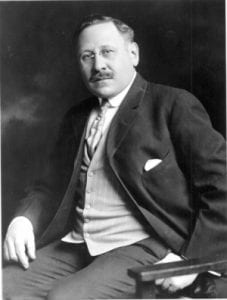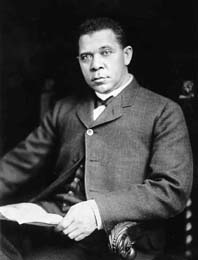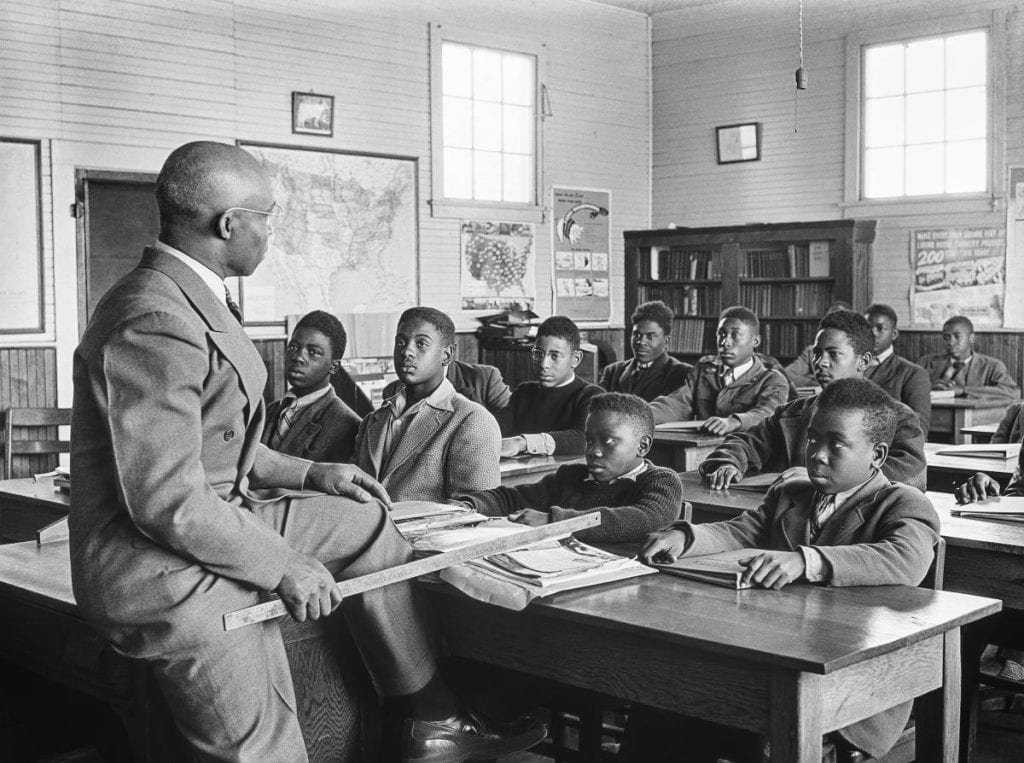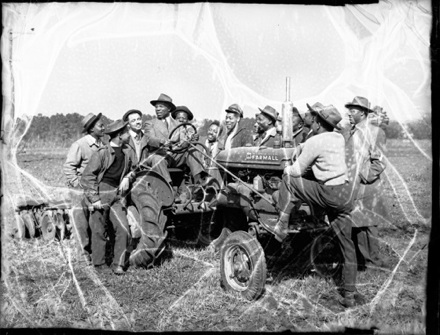Labor Day signifies the start of school in many parts of the county. Many students eagerly anticipate the start of a new school year. However, if you were a black child 100 years ago in the South, you might not be very excited about the start of school.
This was because the school you attended was more than likely a dilapidated, rundown old building with hand-me-down books and desks from the white school (Granat, 2003). Often the books were missing pages (Stack, 2008). The school experience for black children and white children was vastly different. In 1930, the average educational expenditures for black children in the South was $12.57 while the average for white students was $44.31 (Robbins, 2005).
The rationale for the funding differential was based upon the belief that money should be spent on schools in relation to the amount of taxes paid. Since the black residents were typically poorer and paid less in taxes, the amount of money spent on schools for the black students was paltry (Anderson, 1988).


So, what should be done to remedy the situation? Booker T. Washington and Julius Rosenwald, came up with an idea. So who was Washington and Rosenwald and what was their idea? Washington was the principal of the Tuskegee Institute in Alabama. Washington led Tuskegee to a position of national prominence and was generally recognized as the most powerful and respected black leader in America in the early 1900s. Julius Rosenwald was born in Illinois and eventually became president of Sears and Roebuck. He amassed a fortune that he used to support philanthropic causes.
Rosenwald had read Washington’s biography Up From Slavery and empathized with him. As a Jewish person, Rosenwald had also experienced discrimination. Washington asked Rosenwald to serve as a trustee for Tuskegee.
In 1912 Washington asked Rosenwald if he could use $2,100 of Rosenwald’s $25,000 donation in an experiment to build six rural schools for black children. Rosenwald agreed with one stipulation, the money would be used as a challenge grant. The local community had to raise money or donate materials and labor.
Tuskegee would provide the building plans and also stipulated that industrial education would be part of the curriculum. The schools were to have an industrial room and girls were to be taught cooking and sewing while boys would be taught farming and the use of tools. The schools were to be built on two acres of land so there could be a plot for agricultural demonstrations and school gardens (Hoffschwelle, 2006)
Rosenwald was so impressed with the project that he donated $30,000 for the construction of an additional 100 schools. The program took off. After the death of Washington in 1915, there was concern about the leadership of the program. Accordingly, an office was created in Nashville, TN to oversee the program.
Blueprints for a variety of school sizes were created, published and made available to the public. The plans included the most up-to-date innovations including general specifications and directions for community school buildings – from the best excavation process to the type of wood to be used for doors down to how far from the ground the windows were to be hung. Below is one the plan booklets, a sample school plan (one of many) and an image of a school built according to the plan.


 The windows, one of the unique features of Rosenwald Schools, were a simple but influential design created during a time when electricity was rare in rural areas. These large windows allowed more sunshine in, providing optimal lighting of the classrooms. Carefully specified room size and height, blackboard and desk placement, paint colors and even the arrangements of window shades, were essential to designers (Hanchett, 2004).
The windows, one of the unique features of Rosenwald Schools, were a simple but influential design created during a time when electricity was rare in rural areas. These large windows allowed more sunshine in, providing optimal lighting of the classrooms. Carefully specified room size and height, blackboard and desk placement, paint colors and even the arrangements of window shades, were essential to designers (Hanchett, 2004).
By 1932, the rural school building program had produced more than 5,000 new schools, 217 teachers’ homes, and 163 shop buildings all located within 883 counties of the 15 states under which The Rosenwald Fund operated (National Trust for Historic Preservation, 2008). A PowerPoint presentation that contains a table showing the number of schools in each southern state can be downloaded here.
At one point in time, 1 out of 3 black children in the South was attending a Rosenwald School. It should be noted that Julius Rosenwald did not want the schools to be named after him.
Originally, the schools focused on elementary education but evolved over time to include high schools. However, the high schools were typically labeled as “training schools”. The reason for this was because of the racist assumption that black students could not truly be educated, but could only be trained like animals (Schwartz, 2006).
Agricultural Education was an integral component of many of the Rosenwald funded Training Schools. This included the Pender County Training School in North Carolina. Singleton C. Anderson, a graduate of Hampton Institute, came to the Pender County Training School in the early 1920s to teach agriculture, woodworking, metalworking, masonry, and animal husbandry. At first, he taught elementary agriculture in grades 3-6 (Steelman, 2009). Later he taught high school level students. Local families were distrustful at first, thinking they didn’t need any help teaching farming to their children. But Anderson won them over with his energy and abilities. Anderson conducted adult classes for farmers and he and his students are credited with 160 “home-raisings” – the landowners bought the materials and Anderson and his students would build the houses (Hull, 2009). He also built a cannery on campus and added a plant nursery. Below are several photos of Anderson and his students.




One of Anderson’s former students wrote “I was a student of Professor Anderson’s from 1961-1965. He taught me how to do woodworking, judge livestock (cows and pigs) and placed me in an Oratorical Contest for the district. I won 2nd place. He visited my home on more than one occasion and was someone I highly respected. He also arranged for me to attend a summer camp for a week at Swansboro, NC, at the New Farmers of America/4 H Camp. It was there that I learned to swim. He greatly influenced my life (Newkirk, 2010, quoted by Hull).

To learn more about Rosenwald Schools from an Agricultural Education perspective you might be interested in the paper The Role of Rosenwald Schools in Agricultural Education for African Americans written by a couple of my former students. This was presented in 2011 at the annual meeting of the American Association for Agricultural Education.
Fisk University has a searchable online database of all the Rosenwald Schools in the country (http://rosenwald.fisk.edu/). You enter the state and county into the appropriate fields and will learn the names of the schools in the county, when they were built, the sources of the funding and at times, photographs. There are a few “ghost” Rosenwald Schools listed in the database. These are some schools in Mississippi for which money was allocated but they were never built because the Mississippi person in charge of the program embezzled the money. Likewise, some maps showing where Rosenwald Schools were built do not include Missouri, but there were five Rosenwald funded buildings built in Missouri. It might be interesting to enter “training school” in the historic name field of the Fisk database and then repeat the exercise using “high school.” Which is the more common name?
The example of Singleton Anderson, teaching agriculture in a Rosenwald School, was repeated by numerous black agriculture teachers throughout the South. The Rosenwald School is a largely forgotten (and undocumented) aspect of the history of Agricultural Education and the NFA in the United States. However, the schools were responsible for building communities and improving agriculture. But most importantly, they changed the life for the better for thousands of students of color.
Teaching Ideas:
- One category of SAE is the Exploratory SAE. While this type of SAE normally has a student shadowing an agricultural professional, doing research on a career, or preparing a scrapbook about an agricultural issue, there is nothing the prevents the Exploratory SAE from being historical in nature.
If you live in a southern state you could have students use the Fisk University database to identify the Rosenwald Schools in your county. The students might prepare a map showing the location of the schools, collect photographs, interview former students of the school, create a video, or do something else creative. A geocache could even be created for Rosenwald School locations. Many Rosenwald school buildings no longer exist, but there are still some. Those that exist have been made in museums, community centers, etc. During integration in the 1960s, many Rosenwald schools were abandoned. It was a loss of identy for many.
- If you live in a state that did not have Rosenwald Schools, students could still do research about the Rosenwald Schools. There are numerous videos and articles online as are interviews with former students of Rosenwald Schools. Here are just four examples (there are many more):
- https://www.youtube.com/watch?v=kfxfxSgSlGM&t=88s – The Rosenwald Schools. A High School student’s documentary about Rosenwald Schools. You definitely should watch this video and share with your students. It is that good and is about 10 minutes long.
- https://www.youtube.com/watch?v=uAfOBhdSXB0 – The Rosenwald Schools: Work in Progress. This presentation delves into the motivation of Rosenwald and his relationship with Washington.
- https://www.youtube.com/watch?v=ce6AxEOV-w0 – Rosenwald Schools in Texas. Includes interviews with former students. A very short video.
- https://vimeo.com/ondemand/34431/231105274 – Under the Kudzu. This is documentary about two Rosenwald schools in North Carolina including the Pender County Training School which was where Singleton Anderson taught. It is 50+ minutes and length and there is a small fee to watch it at Vimeo.
- During national FFA week (which also coincides with Black History month) one could include a lesson about Rosenwald Schools in the week’s activities. A Powerpoint presentation I have created can be downloaded. There are also several informative videos such as those above focusing on Rosenwald Schools.
References:
Anderson, J. D. (1988) The education of Blacks in the South, 1860-1935. Chapel Hill, NC: University of North Carolina Press.
Granat, D. (2003). Saving the Rosenwald schools: Preserving african american history. Retrieved from http://www.aliciapatterson.org/APF2004/Granat/Granat.html
Hanchett, T. (2004). Saving the south’s Rosenwald schools. Retrieved from http://www.rosenwaldplans.org/history.html
Hoffschwelle, M S. (2006). The Rosenwald schools of the American south. Gainesville, FL: University Press of Florida.
Hull, Elizabeth (October 2, 2009). Who is Singleton Anderson? https://blogs.lib.unc.edu/morton/index.php/2009/10/who-is-singleton-anderson/
National Trust for Historical Preservation. (2009 ). Origins At Tuskegee Institute. Retrieved from National Trust For Historic Preservation: http://www.preservationnation.org/travel-andsites/sites/southern-region/rosenwald-schools/history/origins-at-tuskegee.html
Robbins, L. (2005). Changing the geography of reading in a southern border state: The Rosenwald fund and the WPA in Oklahoma. Libraries and Culture, 40(3), 358.
Schwartz, Eugene G. American Students Organize: Founding the National Student Association After World War II: An Anthology and Sourcebook, New York: Praeger, 2006.
Stack Claudia (October 12, 2008) Symbols of Sacrifice. www.starnewsonline.com/news/20081012/symbols-of-sacrifice.
Steelman, Ben (October 9, 2009). What was the Pender County Training School? www.myreporter.com/2009/10/what-was-the-pender-county-training-school/
